Simultaneous Localization
and Mapping for Mobile
Robots:
Introduction and Methods
Juan-Antonio Fernández-Madrigal
Universidad de Málaga, Spain
José Luis Blanco Claraco
Universidad de Málaga, Spain
�
Managing Director:
Book Production Manager:
Publishing Systems Analyst:
Managing Editor:
Development Editor:
Assistant Acquisitions Editor:
Typesetter:
Cover Design:
Lindsay Johnston
Jennifer Romanchak
Adrienne Freeland
Joel Gamon
Hannah Abelbeck
Kayla Wolfe
Lisandro Gonzalez
Nick Newcomer
Published in the United States of America by
Information Science Reference (an imprint of IGI Global)
701 E. Chocolate Avenue
Hershey PA 17033
Tel: 717-533-8845
Fax: 717-533-8661
E-mail: cust@igi-global.com
Web site: http://www.igi-global.com
Copyright © 2013 by IGI Global. All rights reserved. No part of this publication may be reproduced, stored or distributed in
any form or by any means, electronic or mechanical, including photocopying, without written permission from the publisher.
Product or company names used in this set are for identification purposes only. Inclusion of the names of the products or
companies does not indicate a claim of ownership by IGI Global of the trademark or registered trademark.
Library of Congress Cataloging-in-Publication Data
Fernandez-Madrigal, Juan-Antonio, 1970-
Simultaneous localization and mapping for mobile robots: introduction and methods / by Juan-Antonio Fernandez-Madri-
gal and Jose Luis Blanco Claraco.
p. cm.
Includes bibliographical references and index.
Summary: “This book investigates the complexities of the theory of probabilistic localization and mapping of mobile
robots as well as providing the most current and concrete developments”-- Provided by publisher.
ISBN 978-1-4666-2104-6 (hardcover) -- ISBN 978-1-4666-2105-3 (ebook) -- ISBN 978-1-4666-2106-0 (print & perpetual
access) 1. Mobile robots. 2. Geographical positions. 3. Localization theory. I. Blanco Claraco, Jose Luis, 1981- II. Title.
TJ211.415.F474 2013
629.8’932--dc23
2012015952
British Cataloguing in Publication Data
A Cataloguing in Publication record for this book is available from the British Library.
All work contributed to this book is new, previously-unpublished material. The views expressed in this book are those of the
authors, but not necessarily of the publisher.
�
vii
Foreword
There are theoretical experts and experimental experts, and often little overlap between the two. Dr. Juan
Antonio Fernández Madrigal and Dr. Jose Luis Blanco Claraco are prominent examples of both: they
have contributed novel concepts and these concepts have been rigorously tested in extensive real world
experiments. I had the distinct pleasure of meeting Jose at Oxford University in the fall of 2007. We had
both just joined the Mobile Robotics Group, Jose as a visiting scientist and me as a postdoc. As ever,
Oxford was packed with world leaders in robotics and vision—and, in particular, the sub-fields of struc-
ture from motion and Simultaneous Localization And Mapping (SLAM). Even among such distinguished
company, Jose’s contributions are impressive. In his work, one finds efficient, elegant algorithms and
robust real-time systems that work on live data.
The area of simultaneous localization and mapping is vast—for decades researchers have recognized
SLAM as a fundamental prerequisite to capable autonomous robotics, and have built many theories
and systems towards its solution. This present volume represents a monumental undertaking and in
itself testifies to the breadth of the authors’ experience. It takes the reader through the highlights of the
field, providing sufficient historical context and theoretical foundation for the uninitiated to engage in
and master this exciting topic. The authors begin with a taxonomy, dividing the problem along axes
for spatial knowledge representation, the structure and dynamics of the scene, the availability of prior
knowledge, and the types of sensors and actuators the robot has. They then go on to introduce a variety
of robots available on the market, their sensing and actuation capabilities, and discuss the varied tasks
these platforms are designed to accomplish.
Having introduced the problem and the hardware involved, the authors then dive into tools from
probability and statistics (to complement this, they also offer a rich appendix, which helps make the
book stand-alone and broadly accessible). In recent years, these tools have been remarkably helpful in
building principled autonomous robot systems that actually work in the real world. It has been said that
computer vision is estimation theory applied to images, and that SLAM is estimation theory applied to
robot sensor data. Indeed, today we find probabilistic estimation theory at the heart of most perception
problems. Starting with probability theory, the authors have distilled the core mathematical foundations
needed to understand the topics of autonomous localization and mapping.
The problem of SLAM is often factored into two halves: first, solve the localization problem, and then
solve the mapping problem. Due to the inherent uncertainty present in any real system, such a factored
approach can lead to inconsistencies in a robot internal world-model. However, from a pedagogical
point of view, it is favorable to approach SLAM by first discussing localization as a separate and distinct
problem. This book takes that route and uses localization to introduce motion models, sensor models,
and Bayesian filtering—all core concepts needed to understand the broader picture.
�
viii
The third section of this book addresses mapping. There are many kinds of “maps” out there. Some
scientists will argue that any state saving machine constructs a crude map. Others will argue that the
internal representation must somehow “look” like the geometry we see. Generally, the kinds of maps
one builds will depend entirely on the anticipated robot task and the sensors at hand. Vision-based maps
look nothing like laser-based maps, and geometric maps are different from “appearance”-based maps.
Having understood the chapters on mapping, the reader will know how to apply the right mapping tool
and sensor suite to robotic mapping problems they may face in the field.
The book concludes with advanced topics in SLAM and directions for future research. The authors
note that the problem of long-term autonomy and lifelong learning are attracting increased attention.
Robots now routinely operate without human intervention for short periods of time, and a few systems
have demonstrated operation over much longer periods. The state-of-the-art in mapping and localization
systems has shown convincing results on large-scale environments. Three key lessons learned by the
community and discussed in this book include: 1) the importance of properly modeling uncertainty; 2)
using graphical, relative manifold representations; and 3) using scalable place recognition techniques.
While these lessons are valuable, there are many challenges left to solve. The final chapter crystallizes
and identifies the key issues and challenges we face as robotic systems are tasked to operate in increas-
ingly large-scale environments and over long periods of time.
The techniques and algorithms presented in this book are at the heart of mobile robot perception. The
authors are both expert theoreticians and experimentalists—they have much to offer and have worked hard
to make this text complete and accessible. Having mastered the material in this book, the reader will be
well positioned to contribute their own experience and knowledge to the growing field of mobile robotic
localization and mapping, and help usher in the era of useful, long-term autonomy for mobile robots.
Gabe Sibley
George Washington University, USA
�
ix
Preface
Today, robots face a similar challenge to what occurred to many members of human societies of the First
World in the last century: they are trying to make their way out from a profitable and well-known posi-
tion in the industry—mainly as robotic manipulators—to land into a much more unpredictable and
undefined place in the service sector where they will have to work side by side with humans; from tak-
ing the role of humans at work to live with humans all the time; from the nuts and bolts of mechanics
to the more ethereal challenges of understanding their place in our world. Mobile robots have left behind
their cousins, the manipulator arms, along this way, for our world is much more dynamic, large, and
complex than anything a fixed arm could handle.
From the first prototypes resembling home appliances in the 1960s to the present commercially-
available humanoids that seem to have jumped out from a manga TV series, mobile robots have strug-
gled to freely move among us efficiently and safely. When we look at them today, it is not difficult to
imagine how they would interact with people if they had only part of the capabilities claimed by their
manufacturing companies, in how many applications they might be employed, and in all the ways they
could help us in our daily lives.
The general public would probably be surprised by the actual limitations of these robots. Amazing as
they look (and as they truly are, from a scientific perspective), we would do better in remembering that
it was only during the last two decades that robots were endowed with the first consistent and successful
theory of localization and mapping, which are the two basic operations that underlie any task we could
devise for any practical robot: knowing where it is within its environment and figuring out what that
environment looks like. Today, these two fundamental problems cannot be considered to be completely
solved for every practical situation yet, in spite of the remarkable scientific corpus developed around
them. This book aims at introducing that corpus to the reader. More concretely, we focus on mobile robot
localization and mapping approaches that rely on the theory of probability and statistics.
The theory involved in probabilistic localization and mapping methods can become quite cumbersome,
in accordance with the importance and quality of the obtained results. Books and papers exploring those
complexities are easy to find, but they may be difficult to grasp for those who are not active researchers
in the area and do not have a solid background in mathematics. Furthermore, most of the material is
quite scattered among journals, books, and conference papers, and in many occasions is addressed from
the diverse—and often confusing—terminologies of very different disciplines. Since mobile robots have
begun to get out of research labs and into the hands of the general public, we believe it is now time to
offer a comprehensive introduction to these subjects that is appropriate for a wider audience than tradi-
tional scientific literature, and that gathers in a single place the fundamental concepts needed for fully
understanding the problems, whatever area of science they come from.
�
x
From the perspective of two authors with many years of experience researching and teaching in this
field, we have aimed this goal in the gentlest possible way, while still doing it rigorously. In particular,
we have focused on three aspects: firstly, on explaining and justifying most deductions that are involved
in the relevant parts of the theory, including step-by-step demonstrations that are typically obviated in
specialized literature; secondly, on including the probabilistic, statistical, and robotic bases that other
texts take for granted—even after saying otherwise; and thirdly, on providing a glimpse of the histori-
cal development of the covered theories and methods, not intending to offer an exhaustive historical
timeline but a sufficient background. Our purpose is that the interested reader can really understand the
treated issues in scope and depth, instead of just presenting powerful and sophisticated mathematical
tools with obscure inner workings.
The book has been designed to be useful for practitioners, graduate and postgraduate students, and
researchers mostly interested in a reference guide. No previous knowledge on probability and statistics
is required—although it would speed up the reading, since two entire chapters are devoted to providing
that background! Also, the prerequisites in physics, calculus, and algebra have been kept to the neces-
sary minimum; alas, self-containment is just an ideal in any finite work these days. Thus, we have had
to assume that the reader has the most elemental knowledge of those three disciplines—we provide, in
Appendix E, some reinforcement on concepts that are especially important for the understanding of the
problems.
This book is structured in three sections. The one that possibly makes this text more distinctive in
its kind is section 1, which collects for the reader the robotic, probabilistic, and statistical backgrounds
required for a good comprehension of the rest. Sections 2 and 3 follow the logical development of the
main problems addressed in the book: localization and mapping, respectively. This organization is
intended for both a sequential reading and for an easy selection of material for reference or teaching.
The first idea about writing this book came from the class notes by the first author for a postgradu-
ate course on mobile robotics. Their main contents, and therefore a substantial number of concepts and
explanations currently in the book, have been used for that purpose during several years; they should
also be amenable for teaching in more introductory courses. In this use, a professor could choose to drop
the first part if the mathematical background is assumed for the students, something that will depend on
the academic context of the subject. The book also introduces some advanced issues in Simultaneous
Localization And Mapping (SLAM) and many recent developments, mainly coming from the experience
and continuous work of the second author during his PhD thesis and beyond.
Overall, we expect our book to serve as the starting point of a fascinating journey into this field, by
setting the foundations of further detailed and thorough studies. Working in probabilistic robotics can
certainly be tough, but we can assure you—this much we know—that it can be highly rewarding too.
Our ultimate hope is that this text provides you with most of the tools needed to open a well-marked
track into the jungle of probabilistic localization and mapping.
Juan-Antonio Fernández-Madrigal
Universidad de Málaga, Spain
José Luis Blanco Claraco
Universidad de Málaga, Spain
April 2012
�
xi
Acknowledgment
The present book is the result of several years of continuous work, not only directly on the text, but also
on the classes on probabilistic localization and mapping that gave rise to it, on continuing with our re-
search in the area, and on documentation about topics not related to its main corpus, such as the history
of mathematics or navigation. All of this has been benefited by the advice and aid of our supporters,
colleagues, and students, but the final result would have not been possible at all without the intervention
of the editors at IGI Global, the anonymous reviewers of the book, and other people who kindly offered
to review early versions—we must thank especially Francisco Ángel Moreno and Eduardo Fernández
for that.
The first author wishes to particularly thank several groups of students of the Master on Mechatronics
Engineering of the University of Málaga, coordinated by Prof. Alfonso García-Cerezo, who provided
continuous feedback to the class notes and lessons on which part of this book is based. Without the
insightful and motivational questions and comments of Juan Carlos Aznar, Mariano Jaimez, Ángel
Martínez, Antonio Menchero, Andrés San Millán, and many others, he would be less confident in the
didactic value of relevant chapters of the book. He cannot forget either the very first students that were
exposed to our stuff, especially Eduardo Fernández, Ana Gago, Javier G. Monroy, and Raúl Ruiz, who
not only suffered beta versions of parts of the text, but, even now, continue actively doing research on
these topics, which means that the probability that they liked the experience was strictly greater than zero.
Concerning the particular case of the methods for localization and mapping implemented by the first
author on the LEGO™ Mindstorms NXT robots, Dr. Ana Cruz has had an invaluable role due to her
pioneering efforts on the use of this robotic platform for educational purposes. Some results shown in
this book have been obtained with the robots she has funded through the 2008-2010 educational research
project entitled “Innovation in Engineering Control Subjects through Lego Mindstorms NXT Robots”
(code PIE-008), through the Escuela Superior de Ingeniería Informática, and also through the System
Engineering and Automation Dpt., all of them in the University of Málaga.
The second author would like to express his gratitude to the numerous researchers whom he had the luck
of meeting in conferences and workshops all over the world, not only for the fun moments, but also for
the inspiring talks and discussions which have always had the same effect: a continuous renewal of his
motivation for continuing working hard in this exciting area. In particular, he wishes to thank Dr. Paul
Newman for supervising his visit to his research lab in Oxford, an experience that enriched and widened
the author’s perspectives on many technical and theoretical aspects of mobile robotics. Gabe Sibley
deserves a double special mention here: first, for kindly writing the foreword of the book, and second,
for his suggestions that put the author on the “right track” of looking at many estimation problems in
robotics as sparse, least-squares problems.
�
xii
In a more practical context, he wants to thank all the researchers, from our lab in Málaga or elsewhere,
who have contributed to the Mobile Robot Programming Toolkit (MRPT) in one way or another, either
coding or providing patches and bug reports. They all have helped improve the reliability of a tool which
has proven invaluable during the preparation of many graphs and results presented in this text. Special
thanks go to Antonio J. Ortiz de Galisteo for his enthusiastic work in the early versions of MRPT and
to Pablo Moreno Olalla for his gigantic contributions to the mathematical and geometry modules, from
which some equations of Appendix A have been taken.
Both of us have developed most of our research career within the Machine Perception and Intelligence
Robotics group (MAPIR), which has proven to be a fertile context for invaluable discussions and feed-
back on the topics at hand and, at the same time, has provided us with diverse perspectives for each
problem, ranging from computer perception to artificial cognition, which have permeated our personal
visions over the years. We both wish to thank the group’s permanent members, Dr. Vicente Arévalo, Dr.
Ana Cruz, and Dr. Cipriano Galindo, all the PhD students of the group, and also our guest researchers,
who have contributed to our work in invaluable ways, particularly Prof. Alessandro Saffiotti, Assoc.
Prof. Achim Lilienthal, and Assoc. Prof. Amy Loufti, from the AASS Research Center of the Örebro
University (Sweden). Special thanks must go at this point to Prof. Javier González-Jiménez, the efficient
lead researcher of the group; furthermore, he has been PhD advisor for both authors; thus, without his
trust and constancy, we would not have started our research careers at all.
The authors also wish to thank the public institutions that contributed funding, especially the Junta de
Andalucía (regional government), which, through a research project, allowed the first author to extend
his research on probabilistic robotics, in spite of not being directly related to localization and mapping,
and also allowed the second author to work on gas mapping for mobile robots. Both lines of study have
had relevant benefits to this book. In addition, several national research projects funded by the Spanish
Government and European research projects funded by the EU have provided invaluable support during
all these years.
Some of the images that illustrate the text are from a number of researchers and companies who have all
willingly granted us permissions for their inclusion here. Therefore, we sincerely thank all the owners
for their unselfish contributions (and also the father- and mother-in-law of the first author, who obtained,
cleaned, and photographed two astragali for us!). Likewise, our gratitude goes to those researchers who
publicly released robotic datasets or source code of their own works, since such contents have also helped
enrich the book with more demonstrations of the practical utility of the discussed topics.
Last but not least, our thanks must go to our families. They always helped and motivated us throughout
all the years as students and, later on, during the tough (and satisfactory) times in our academic careers.
Our warmest thank you is for our wives, Ana and María, who have both unconditionally supported us
during the uncountable hours of preparation of this book without the least complaint.
�
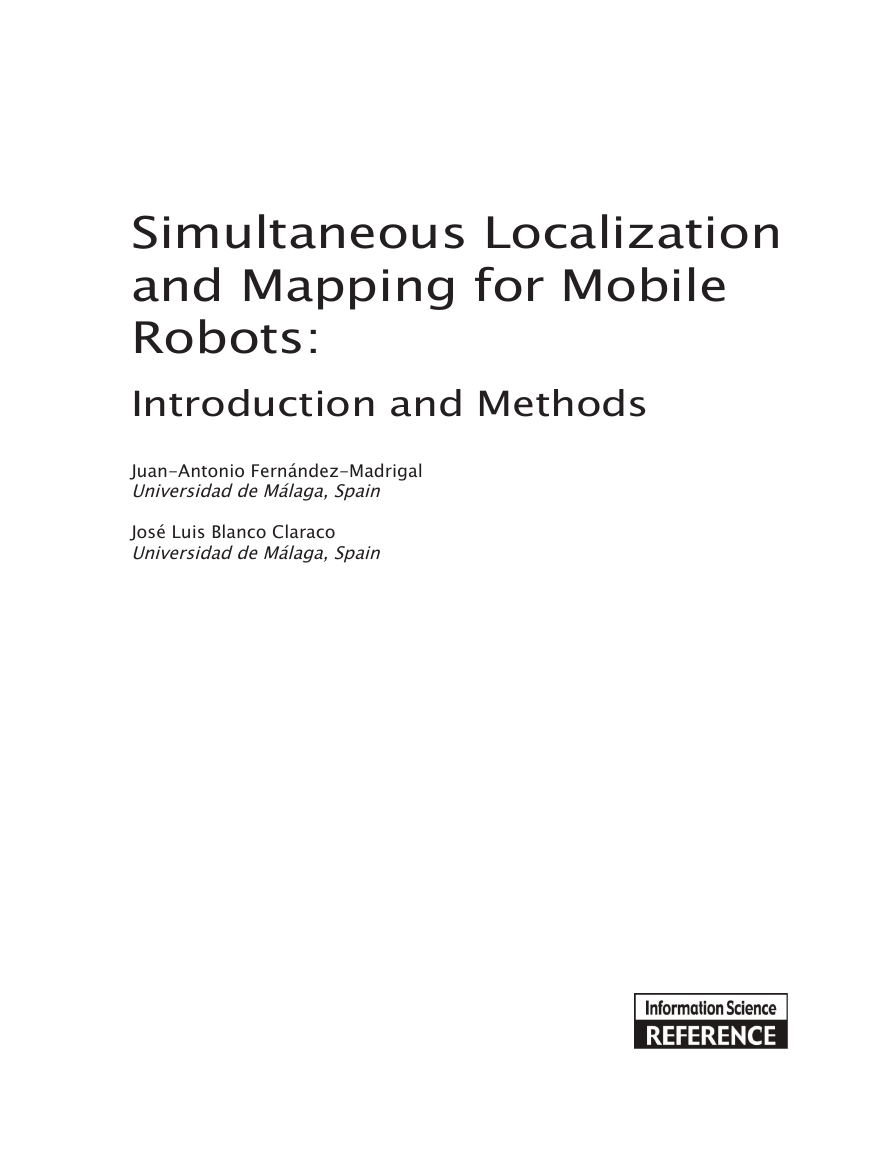

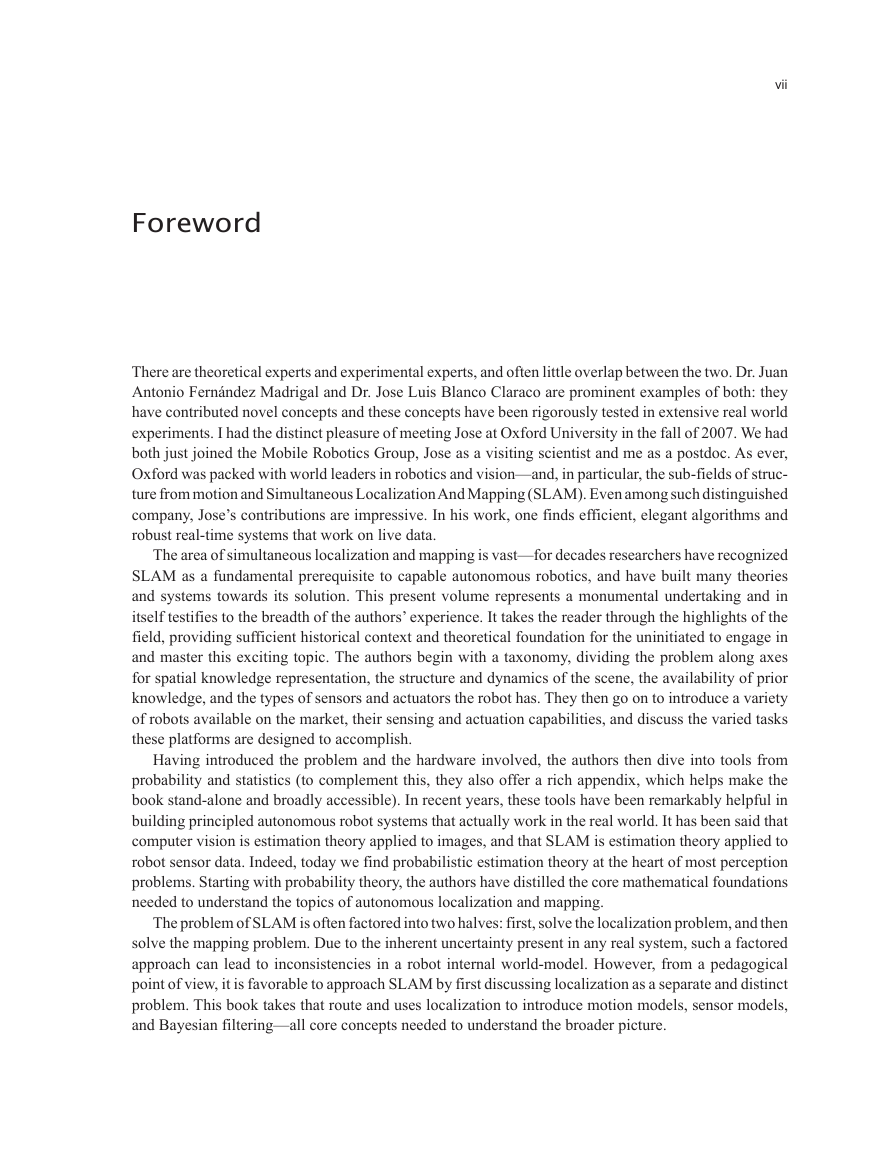
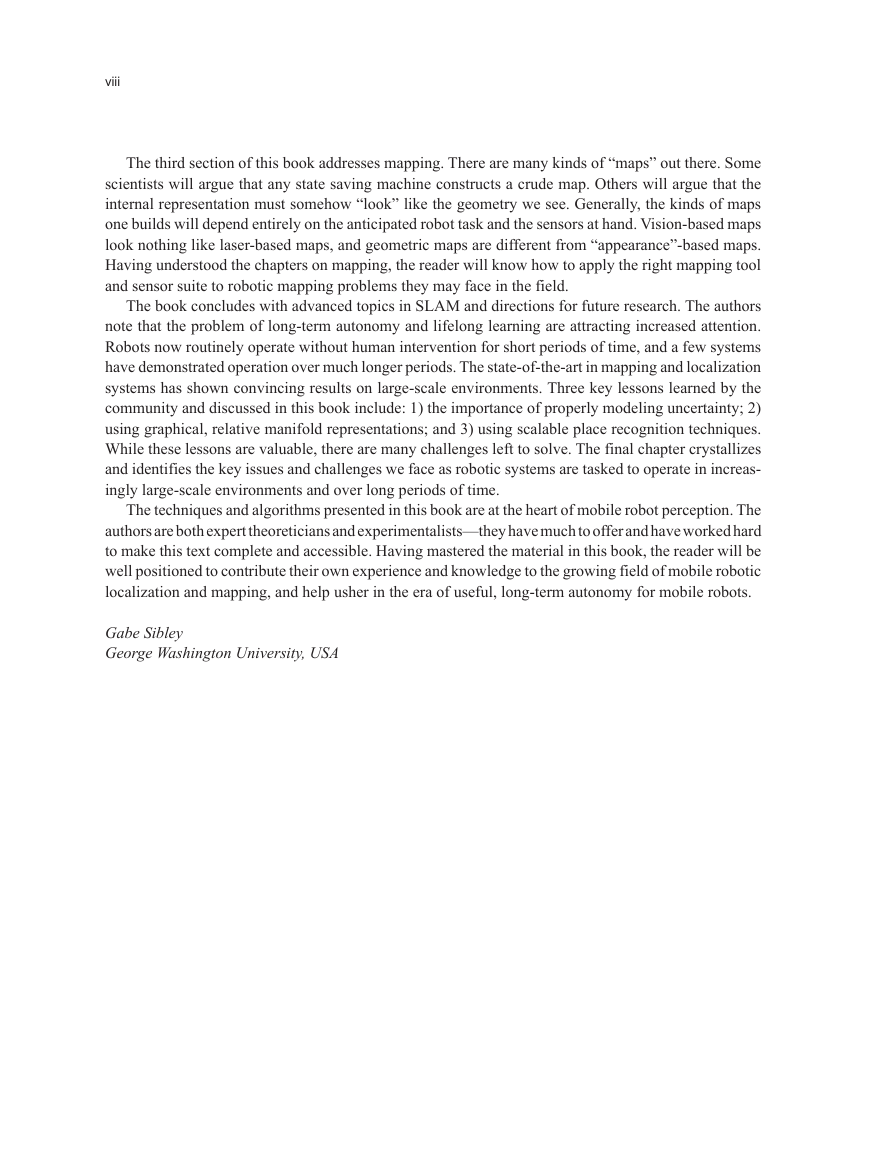

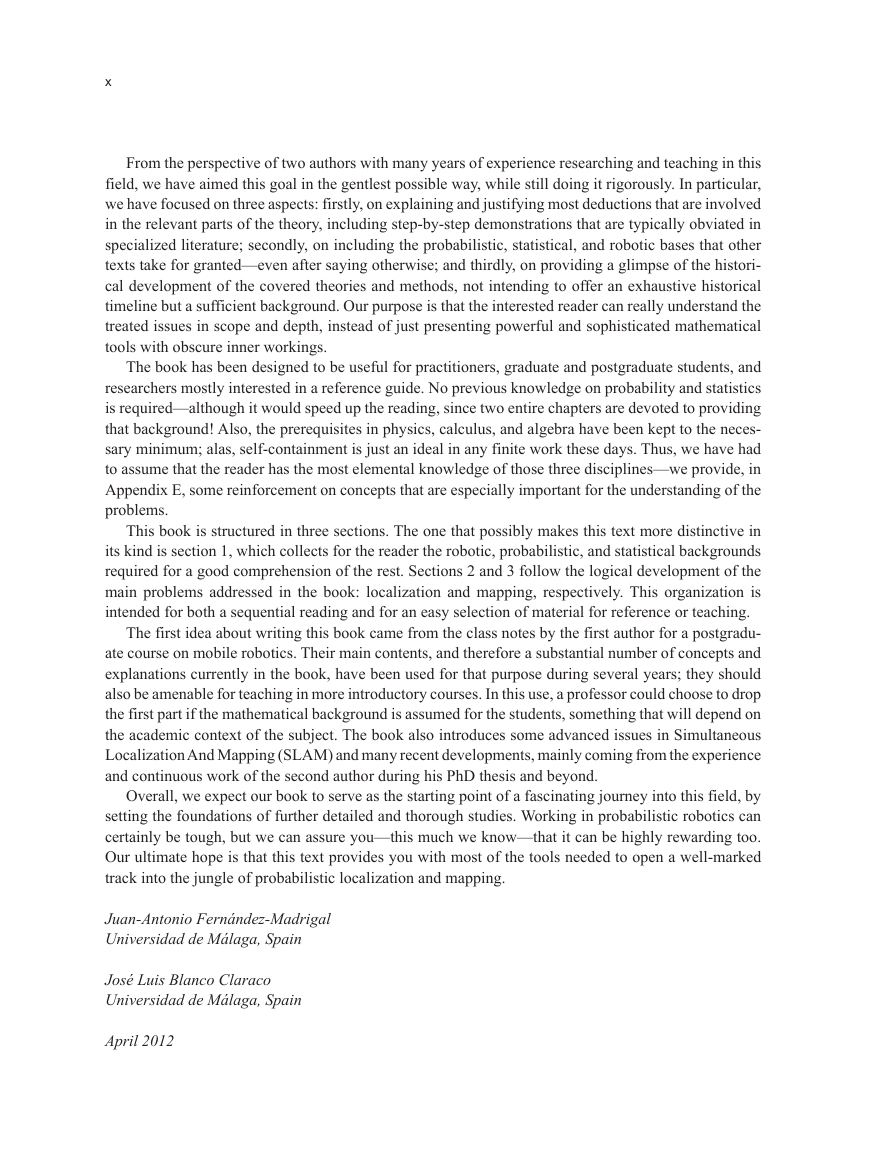
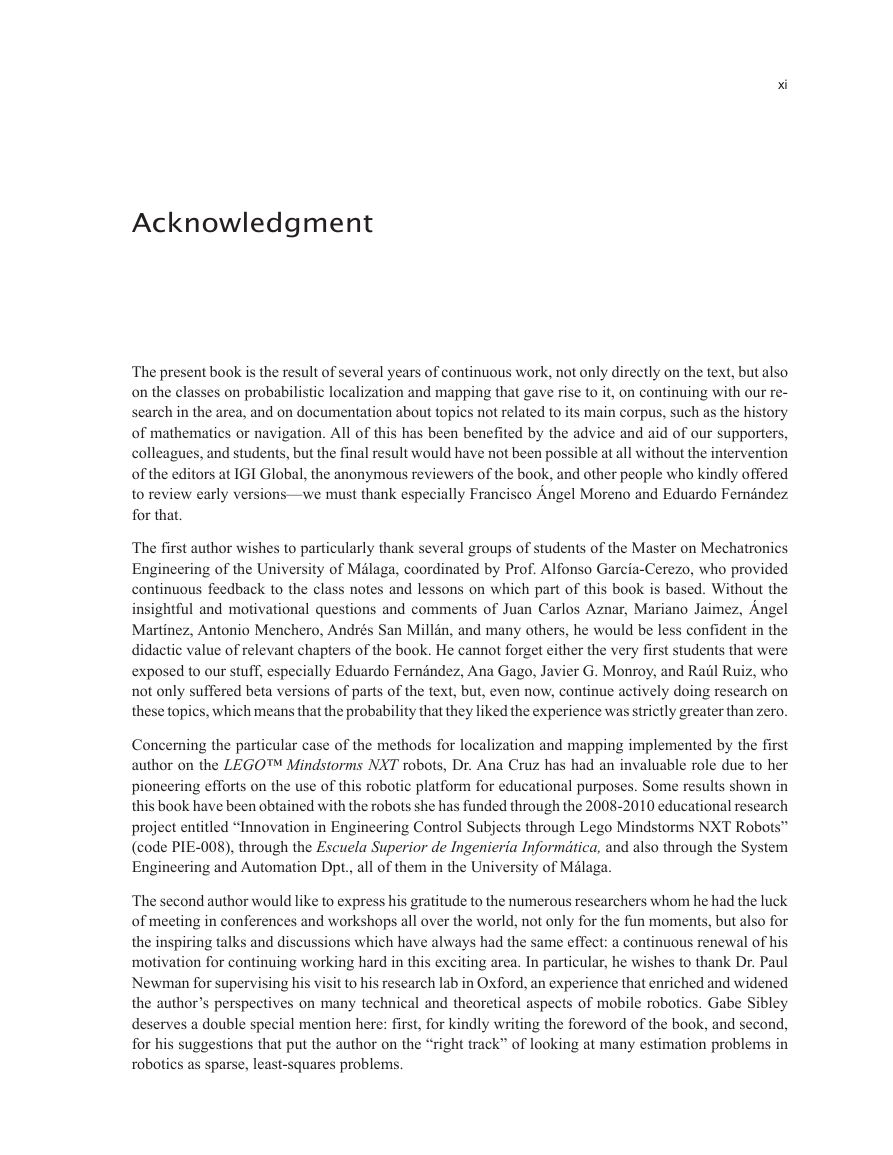
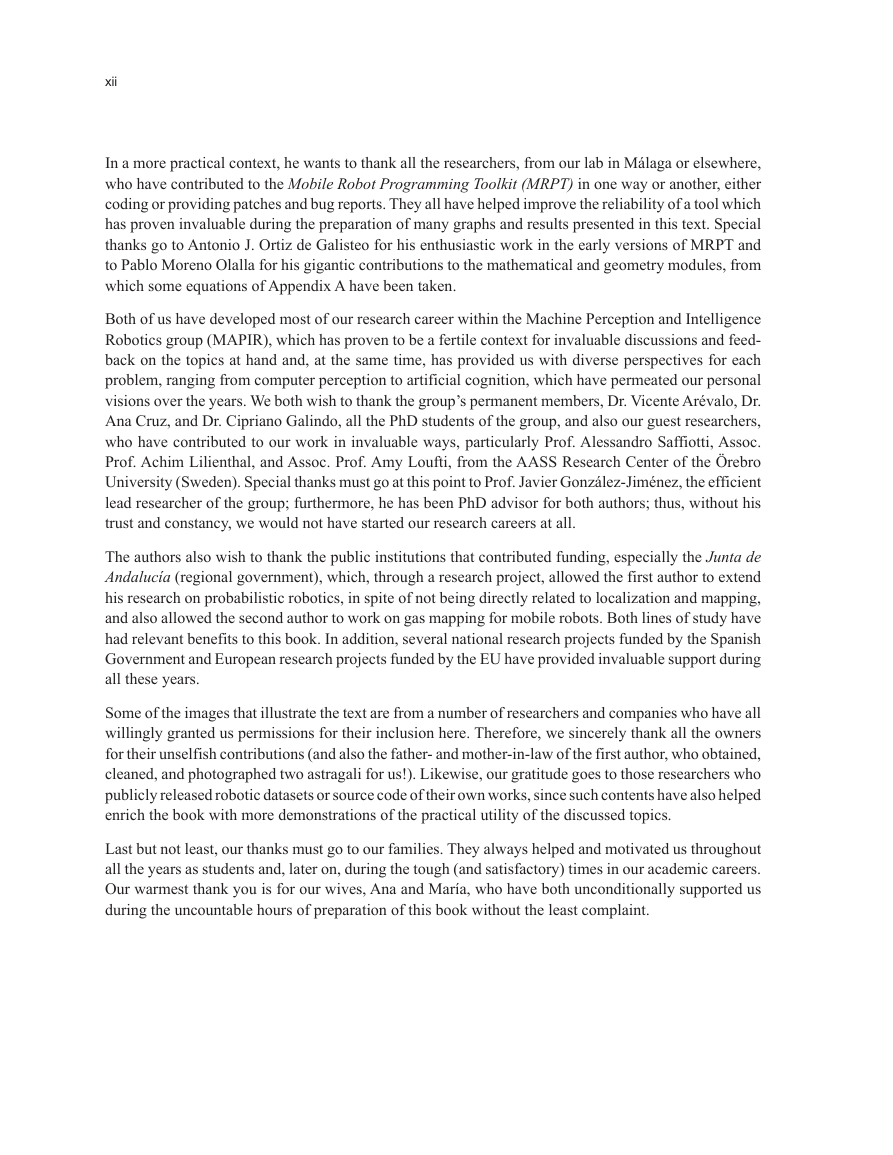








 2023年江西萍乡中考道德与法治真题及答案.doc
2023年江西萍乡中考道德与法治真题及答案.doc 2012年重庆南川中考生物真题及答案.doc
2012年重庆南川中考生物真题及答案.doc 2013年江西师范大学地理学综合及文艺理论基础考研真题.doc
2013年江西师范大学地理学综合及文艺理论基础考研真题.doc 2020年四川甘孜小升初语文真题及答案I卷.doc
2020年四川甘孜小升初语文真题及答案I卷.doc 2020年注册岩土工程师专业基础考试真题及答案.doc
2020年注册岩土工程师专业基础考试真题及答案.doc 2023-2024学年福建省厦门市九年级上学期数学月考试题及答案.doc
2023-2024学年福建省厦门市九年级上学期数学月考试题及答案.doc 2021-2022学年辽宁省沈阳市大东区九年级上学期语文期末试题及答案.doc
2021-2022学年辽宁省沈阳市大东区九年级上学期语文期末试题及答案.doc 2022-2023学年北京东城区初三第一学期物理期末试卷及答案.doc
2022-2023学年北京东城区初三第一学期物理期末试卷及答案.doc 2018上半年江西教师资格初中地理学科知识与教学能力真题及答案.doc
2018上半年江西教师资格初中地理学科知识与教学能力真题及答案.doc 2012年河北国家公务员申论考试真题及答案-省级.doc
2012年河北国家公务员申论考试真题及答案-省级.doc 2020-2021学年江苏省扬州市江都区邵樊片九年级上学期数学第一次质量检测试题及答案.doc
2020-2021学年江苏省扬州市江都区邵樊片九年级上学期数学第一次质量检测试题及答案.doc 2022下半年黑龙江教师资格证中学综合素质真题及答案.doc
2022下半年黑龙江教师资格证中学综合素质真题及答案.doc